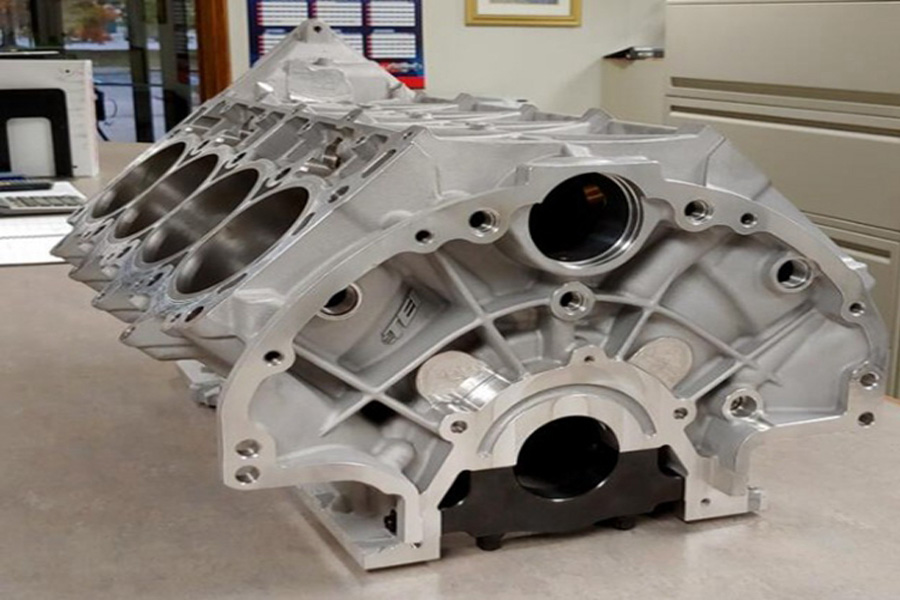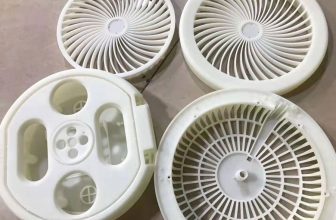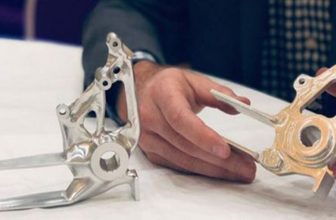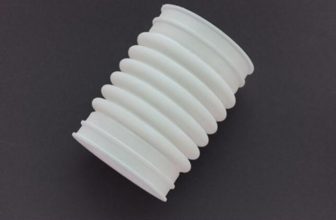
The foundry industry has been using data, and digitization has now brought about fundamental changes in data volume, granularity and processability, and has also opened up new opportunities. In particular, the emergence of 3D printed sand molds has made the digital characteristics of the foundry industry more obvious.
Through the combination of 3D printed sand molds, simulation software, and X-ray non-destructive testing technology, parts can be cast in a digital workflow. In this issue of the article, through the small batch of engine blocks and other products and the case of prototype casting manufacturer TEI, to appreciate the value of sand mold 3D printing in realizing digital casting.
Make casting easier
TEI produces the first batch of aluminum castings for hundreds of new designs every year. In addition to rapid manufacturing services for trial production, TEI also designs and manufactures tooling and automation systems to help its customers put complex castings into production. Now, TEI combines 3D printing sand molds with simulation software and computer X-ray tomography (CT) scanning to realize the workflow of digital prototype part casting.
3D printing builds a competitive advantage
TEI is good at low-pressure casting. Low-pressure casting means that the mold is generally placed above a sealed crucible. Compressed air is introduced into the crucible to cause low pressure (0.06~0.15MPa) on the surface of the molten metal, causing the molten metal to rise from the riser pipe. Filling the mold and controlling the solidification of the casting method. This casting method has good feeding and compact structure, easy to cast large thin-walled complex castings, no risers, and the metal yield rate reaches 95%. No pollution, easy to realize automation. However, the equipment cost is high and the production efficiency is low. Generally used for casting non-ferrous alloys.
Of course, low-pressure casting is a long-standing technology. Low-pressure casting is the earliest anti-gravity casting technology. Today, low-pressure casting is mainly used to produce and sell alloy and magnesium alloy parts, such as automobile wheels in the automobile industry and cylinder blocks of internal combustion engines. , Cylinder heads, pistons, missile shells, impellers, wind guide wheels and other castings with complex shapes and high quality requirements.
TEI provides aluminum, iron and steel machined prototypes and small batch parts to automotive, aerospace and defense customers. With the help of voxeljet-Voxel’s high-efficiency large-format 3D printing system, TEI will increase the speed from design to manufacturing, and provide industrial production with design, 3D printing, casting, heat treatment, processing and testing and other stages of manufacturing services.
Since 2004, TEI has been manufacturing sand molds through 3D printing. 3D printed sand molds have more complex geometries than hand-made molds, and multiple mold parts can be printed as a whole.
In one case, TEI was able to redesign the helicopter gearbox mold, reducing the number of sand cores from 78 to only five 3D printed parts, eliminating many seams and reducing mold assembly.
Combination of 3D printing and simulation
TEI has the largest sand 3D printer in the United States, voxeljet VX4000. The print head has more than 25,000 individually controllable nozzles and a print width of 1100 mm. The printer can print at a speed of 172 liters per hour. It is possible to economically construct sand molds for parts that have brought complex manufacturing challenges in the past: such as engine cylinder heads, pump bodies, valve bodies, exhaust manifolds, shells, closed impellers, structural parts, etc.
In order to design and simulate these sand molds, TEI used the EKK CAPCAST software for die casting simulation. The software enables the company to quickly iterate the mold design, which is characterized by accurate calculation and simulation, high efficiency, fast calculation speed and easy use. The simulation results are closest to actual castings, which is a necessary tool for small batches and rapid iteration work today.
By combining 3D printing technology with simulation. TEI can simulate the entire process of filling the mold with aluminum, and then see how the material solidifies. There is no need to use expensive 3D printed molds for all test iterations, but on the screen. Designers can perform up to 10 iterations within a few hours, then complete the design and 3D print the entire mold.
The combination of simulation and 3D printing helps shorten lead times, making the process from CAD design to metal casting faster, cheaper and easier. TEI develops about four new products every week. 3D printed sand molds enable TEI to quickly manufacture parts, and simulation capabilities enable it to produce accurately and confidently.
It is understood that one method for TEI to control the final quality of parts is to automate the pouring of low-pressure casting, without the need to manually cast aluminum, but to use a computer controller to pump it in. This allows the mold to be filled very quickly in a controlled manner and then pressurized throughout the curing process to eliminate any porosity.
This automated process can produce high-quality castings with good material properties. In fact, these properties can sometimes be too good. For prototype components used for crash testing, TEI must match the material properties of the prototype sand castings and die castings.
Connection between prototype and mass production
High-pressure die-casting parts for automotive body parts have high ductility, so TEI must achieve the same ductility in sand castings. However, sand castings are usually very strong. TEI uses different alloys and heat treatments to “reduce” these properties, making them more like die castings with lower strength.
About half of the parts produced by TEI will use high pressure die castings in the mass production process. However, the development of die casting molds for large vehicle subframes or chassis may take up to 8 months and cost up to 1.5 million US dollars. , And by approaching the performance of die-casting parts, TEI delivered the parts in just 2 weeks through a 3D printed sand mold.
Realize closed-loop data flow
Regardless of whether the casting involved is a prototype for crash testing or an end-use part, its digital thread will not end with computer-controlled casting. After taking out the casting, it is necessary to inspect the casting through various non-destructive testing (NDT) methods and software combined with the required detailed performance.
For prototypes and other low-volume applications, TEI uses its Yxlon CT Compact tomography system, which is a CT scanner designed for medium to large castings. Imaging of density parts is mainly used to find defects in castings and where internal features need to be measured.
At present, the CT data obtained by scanning has been loaded into VGStudio Max of Volume Graphics, which can be superimposed on CAD and analyzed according to the results. The castings are compared with their original designs.
This is the entire closed-loop process of digital casting, predicting what will happen through simulation, and then understanding what is happening through CT scanning. You can confirm what is in the casting without cutting the part. “
For larger batches of parts that need to be inspected, TEI uses an X-ray system to inspect. If a problem is found in a specific casting, the machine can even prompt the operator to check each reference image at that specific point. These images are also stored in the database and shared with TEI customers.
Each casting has a serial number related to a complete manufacturing history, corresponding to the data including casting, heat treatment, and X-ray or CT scan to achieve full traceability.





